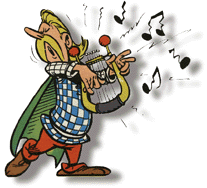 |
Musical Instruments of Antiquity as Illustrated in
|  |
Part 5: Reed Wind Instruments (Bagpipes and Aulos)
Bagpipes
|
Modern bagpipes are usually associated with Scotland, Ireland, and England. However, there is ample evidence that this instrument originated in the Middle East several centuries BC. The first documented bagpipe is displayed on a Hittite slab at Eyuk, dating to 1,000 BC.
In the Bible, book of Daniel 3:7 (see also Daniel 3:5,10,15) a musical instrument translated "bagpipe" was used by the ancient Babylonians sometime around 580 BC.
The earliest secular reference to bagpipes is credited to the Greek playwright Aristophanes in his work The Acharnians (ca 400 BC) where he wrote, "You pipers who are here from Thebes, with bone pipes blow the posterior of a dog." The Romans are credited as having added the air bag to what they called the tibia utricularis. Apparently the Roman emperor Nero minted a coin showing himself playing the bagpipes. In AD 115 the Roman historian Dio Chrysostom wrote about Nero: "They say he can...play the aulos both with his mouth and also with his armpit, a big bag being thrown under it, in order that he might escape the disfigurement of Athens." Nero also used bagpipes to inspire his troops before battle, though at that time they were generally recognized as peasant entertainment. It was the Romans who brought the bagpipe with them to the Celtic lands. An early mention for a use of bagpipes in written history can be found in the 1st-century epic Punica of Silius Italicus on the First Punic War; this mention to an old Galician (northwestern Spain) tribe reads: |
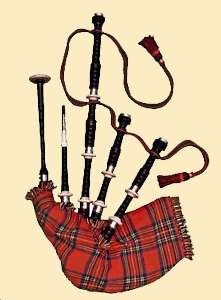
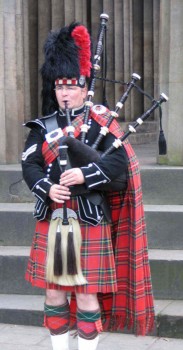
|
| Bagpipes apparently played an important role in the music of Ancient Gaul, because when we first meet Caconofix the villiage bard, in the very first Asterix book (Asterix the Gaul) his instrument of choice is a bagpipe. The quote of Aristophanes equating playing the bagpipes to blowing the "posterior of a dog" apparently rings true, as Asterix, Obelix and Chief Vitalstistix cannot get out of range quickly enough when Cacofonix offers to play a tune. |

|
| The single-drone bagpipe shown in Asterix the Gaul is apparently an early Gaulish instrument. In a later album, Asterix and the Normans, Caconofix the bard is now carrying a lyre and carnyx in addition to his bagpipes. And, his bagpipe is an updated instrument with three drone pipes instead of only one. |
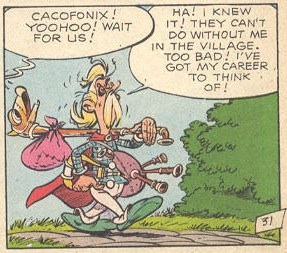
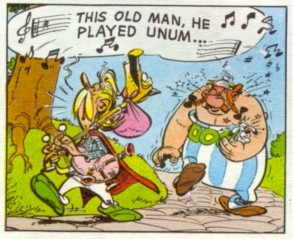
|
| When Asterix and Obelix travel to Britain (Asterix in Britain) to assist Asterix's cousin Anticlimax in his fight against the Romans, they attend a rugby match. Here they are treated to music by an entire pand of bagpipers, the Calendonian Bards. In this instance Goscinny and Uderzo attempt to provide insight into what an ancient bagpipe might have sounded like, through the onomatopoetic "OUiiiiiiiN! GNiiiiinnn!" |

|
Aulos
| The Aulos was the most important an ancient double reed woodwind instrument, a precursor of the modern oboe.[1] It existed in several varieties, but the primary form - as illustrated in the frescoes at right - consisted of a pair of cylindrical (conical) bore pipes with double reed mouthpieces and finger holes. Early aulos were made from reed stems, wood or bone. Later variations were made from ivory and the holes were covered with a mechanical fingering mechanism made from bronze or silver. |
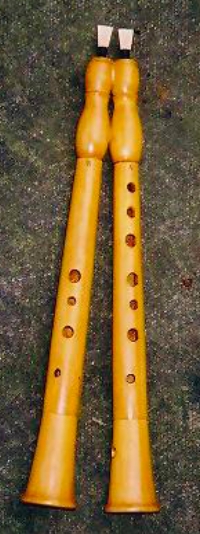
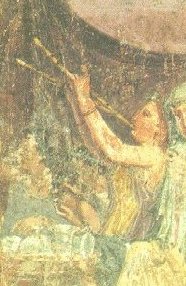
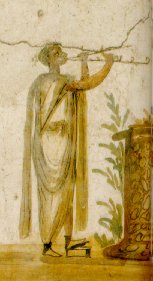
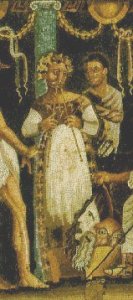
|
| By the fifth century AD the aulos was associated with professional musicians (often slaves). In ancient Greek society the aulos was associated with dramas and sacrifices. It was also played at athletic events including wrestling matches, the broad jump, and discus throw.[2]. |
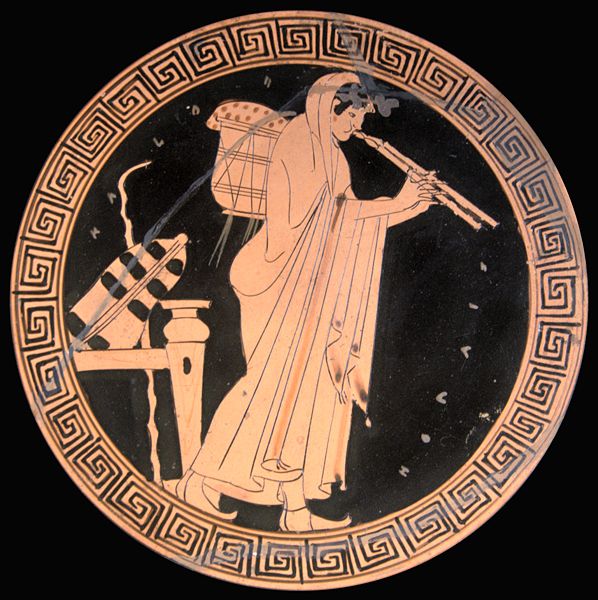
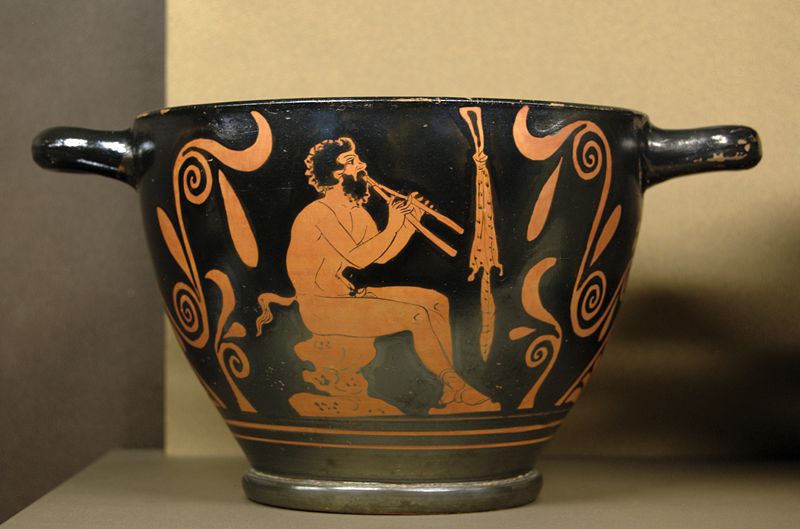
|
| In Asterix and the Roman Agent, Uderzo shows a small musical ensemble, playing music to accompany a meal in Ceasar's villa. The ensemble consisting of a lyre, a double aulos and a tamborine. |

|
|
In Asterix and the Olympic Games, Asterix, Obelix, and Geriatrix go a Greek night club and dance to the music of the more unusual Greek triple aulos, along with a lyre, and panpipes.
|
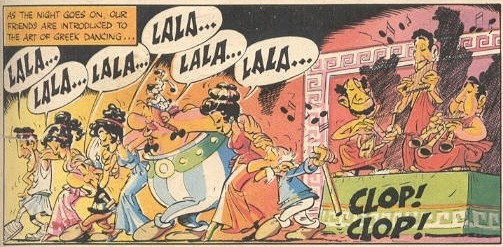
|
 Music in Asterix TOC
Music in Asterix TOC